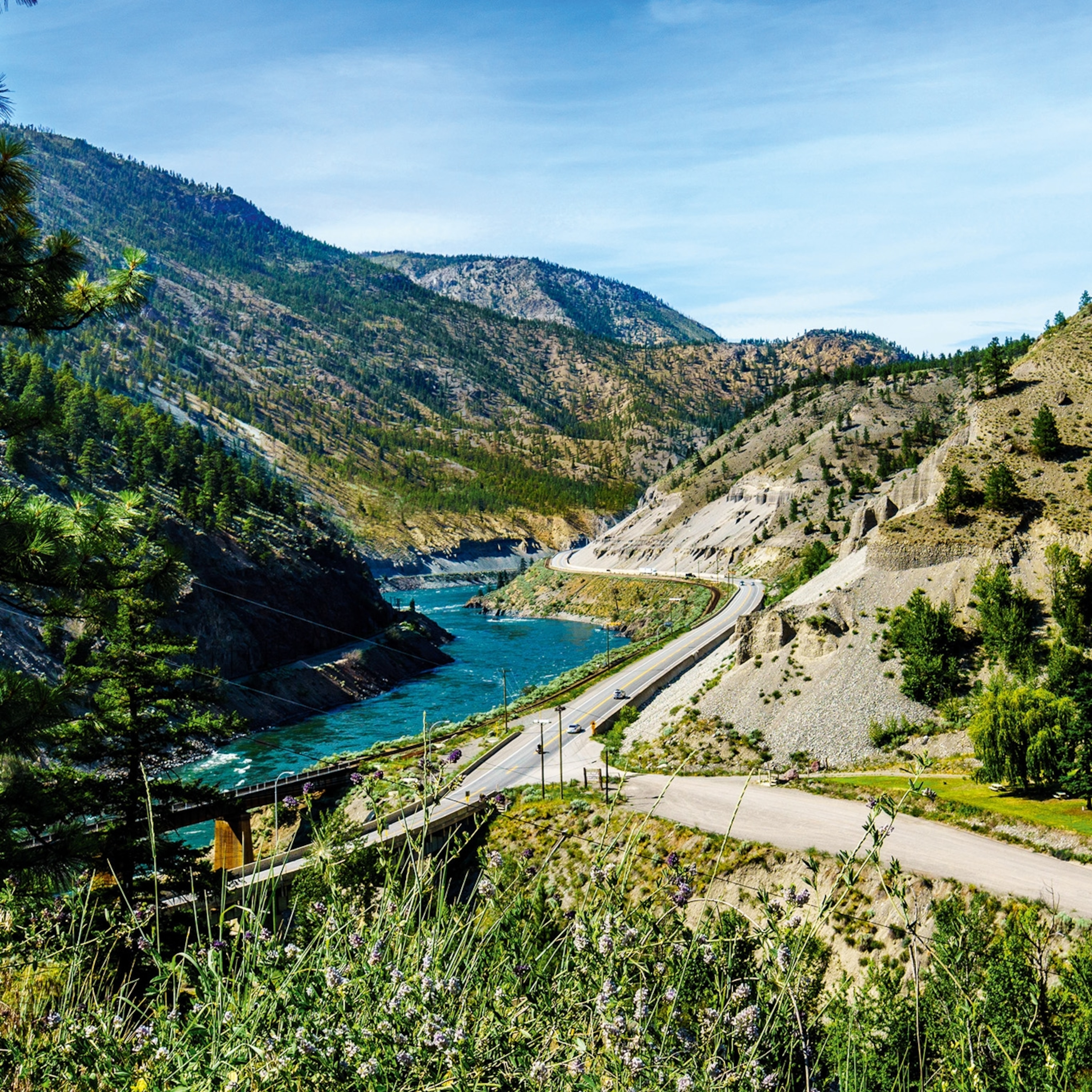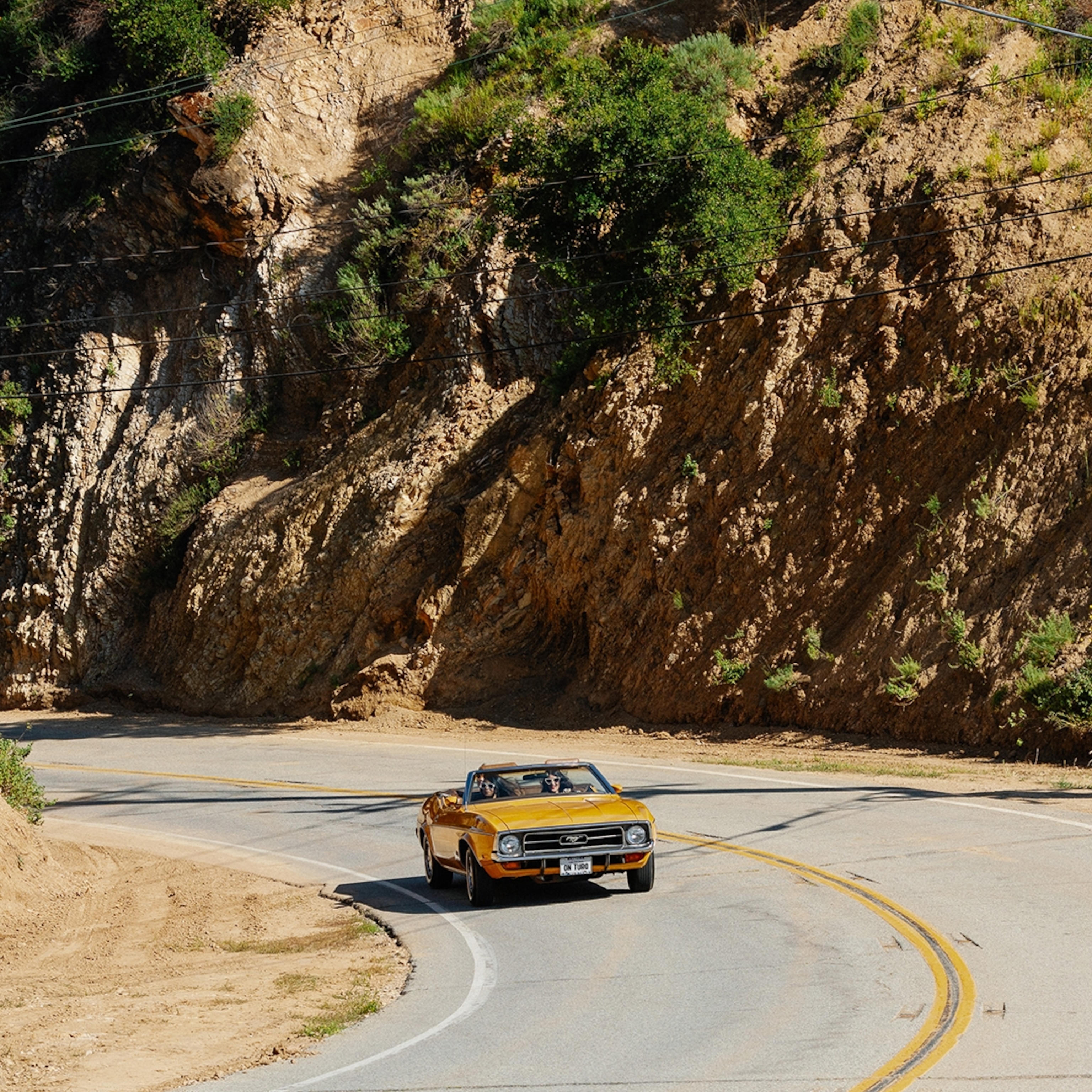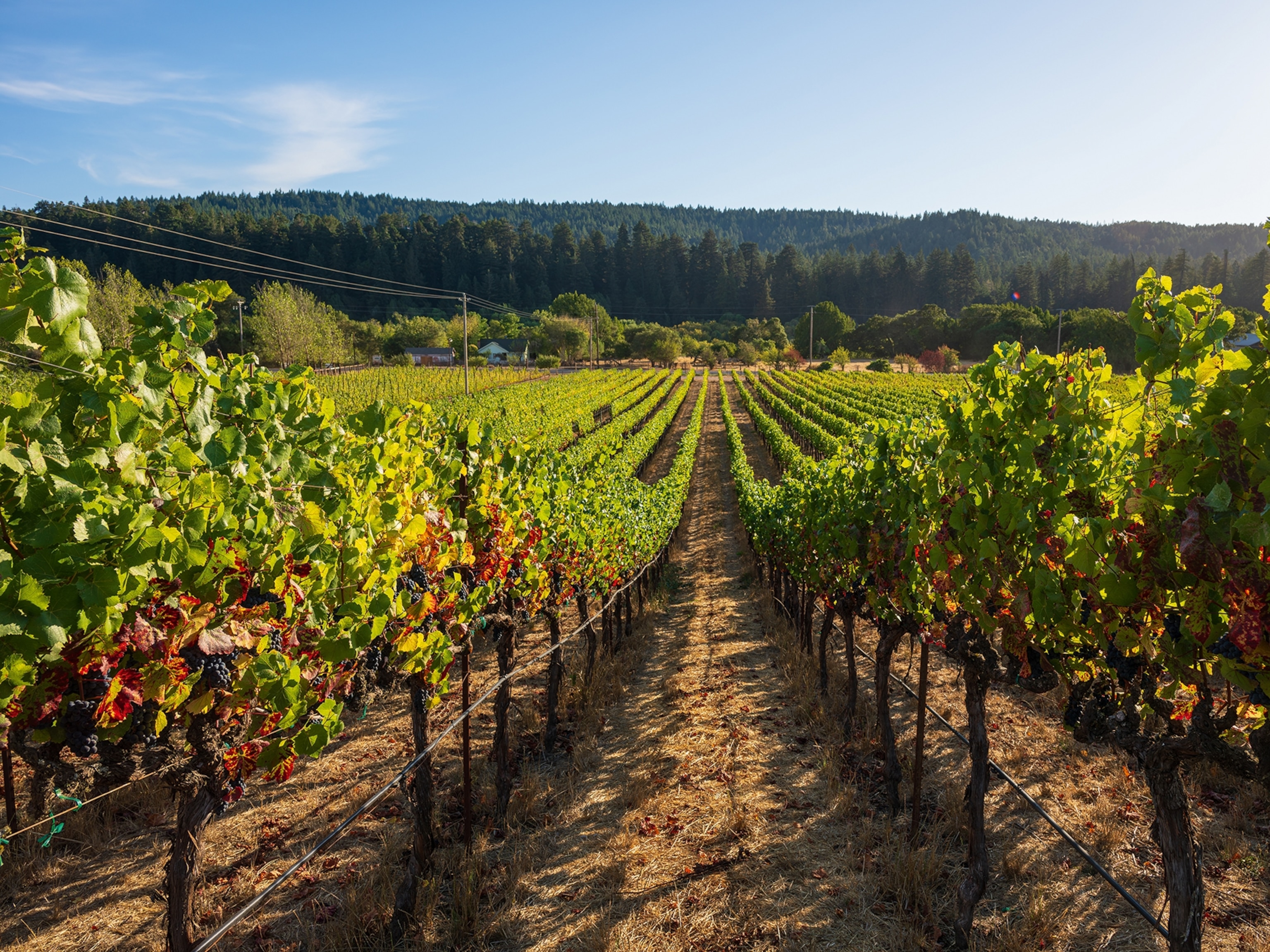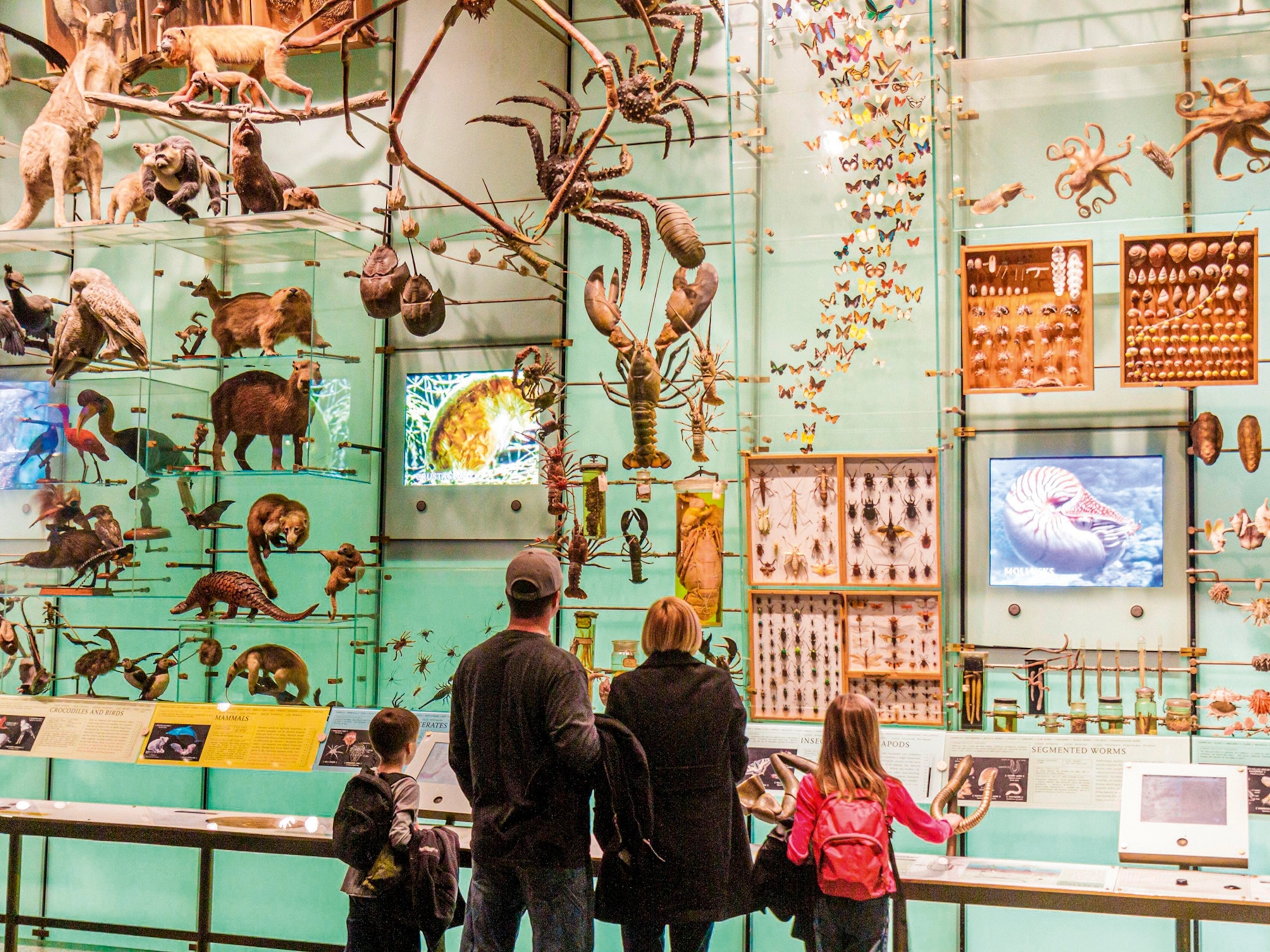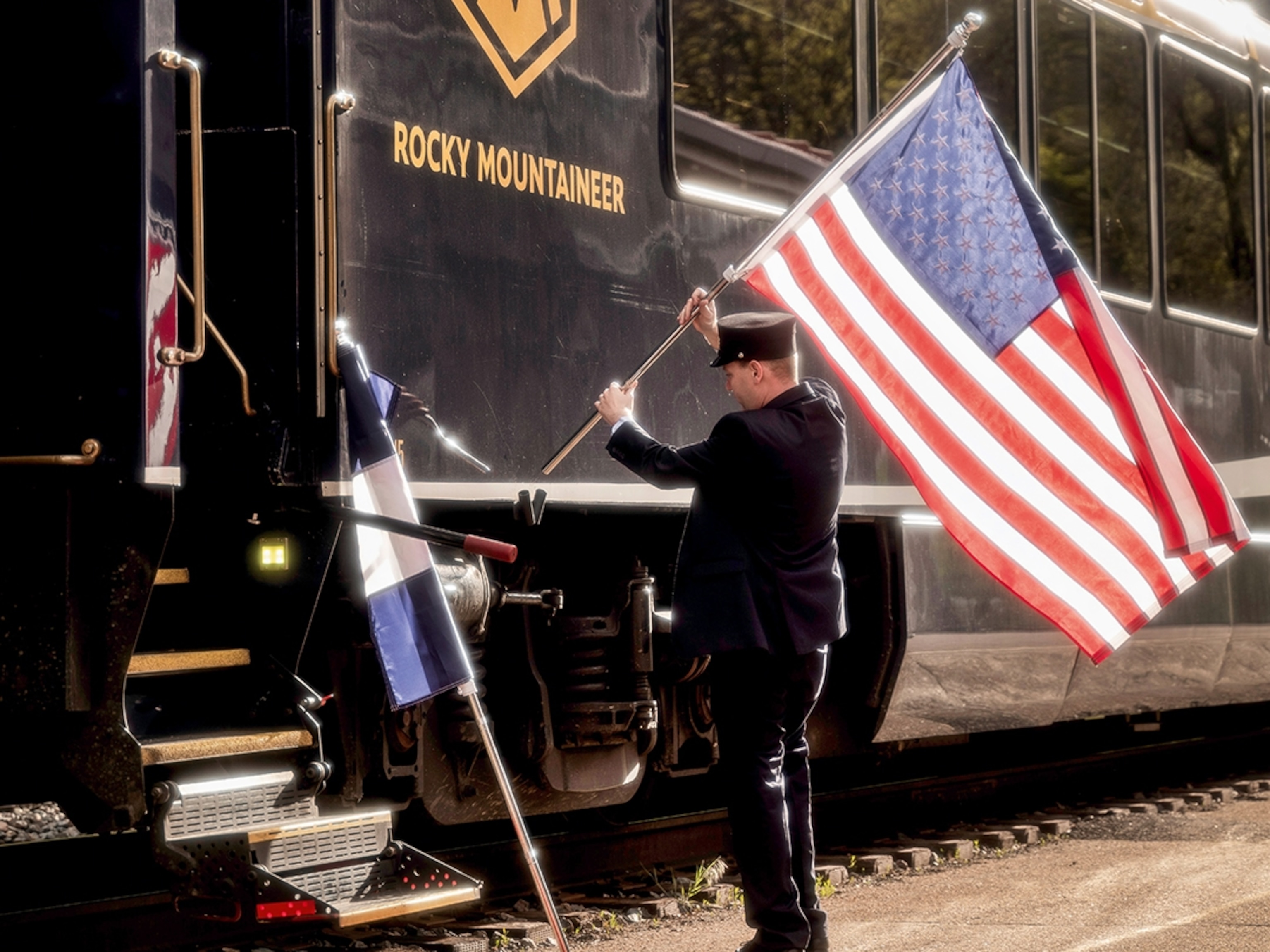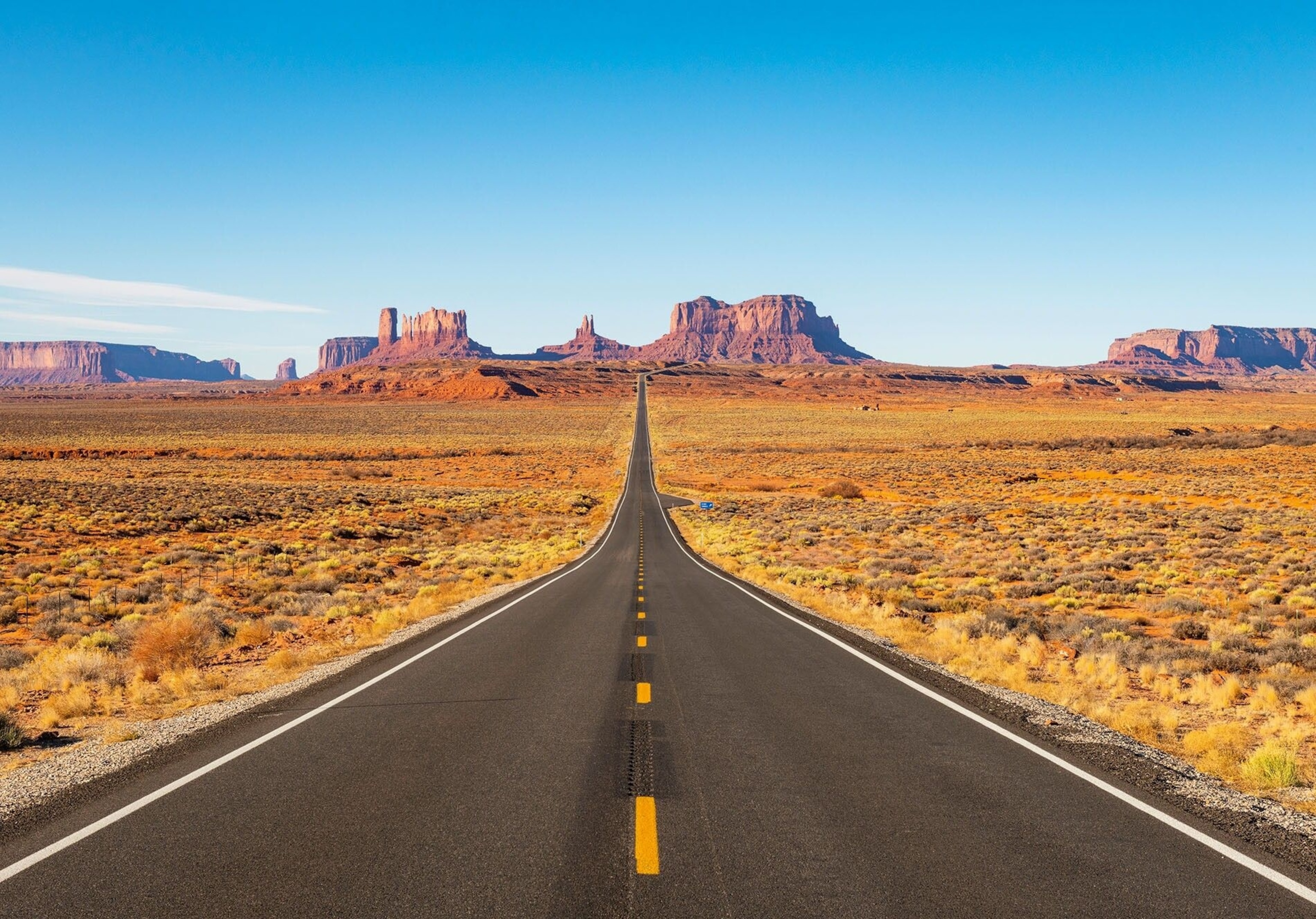
Road-tripping through Utah's otherworldly landscapes on the ultimate American odyssey
Prospectors, outlaws and early Mormon settlers all carved their way through the dramatic topography of Utah, each group leaving their mark on the story of America. Centuries later, this is still a land of discovery, best explored with a classic Airstream.
The road is shimmering in the heat. From where I stand, on the edge of Glen Canyon in the heart of Utah’s untameable high desert, it snakes through the valley to an infinite horizon, the landscape too vast to contain it.
Here is the American West, all its aspects, every possible feature in a single glance: soaring monoliths, steep-cut gorges, fire-coloured mesas, the Colorado River green and slow, reflecting the sky like a mirror. Everything untouched, desolate, burning and wild.
I’ve come to drive this road. The breeze whips up from the canyon and whets my lips with the anticipation of adventure. Keys jangle excitedly in my pocket as I walk. American road trips are the stuff of whispered legend. They’re part of the psyche of the country, written in novels, sung about in music and immortalised in film. You’re not just driving here — you’re following in the footsteps of great American writers like Jack Kerouac; you’re breaking free with rebels like Easy Rider and Thelma & Louise. The scenery feels wilder with every bend you take, unfolding like the backdrop of a classic Western.
In many ways, that’s exactly what it is. Some of America’s most iconic films were shot in Utah, from Stagecoach (1939) to Rio Grande (1950). Road tripping here isn’t just a pleasant cruise, it’s like starring in your own movie — and the leading lady in this one is a shiny silver trailer that sparkles in the sun like a hundred disco balls.
The Airstream has been America’s most iconic piece of campervanning kit since 1929, when its founder Wally Byam’s wife complained she hated camping so much that he built her one of these instead. Since then it’s gone by many names: the silver bullet, the retro rocket, the toaster-on-wheels. In truth, it looks more like a starship from a 1970s sci-fi flick than anything you’d see on the road today. But none of that matters. The Airstream trailer is to campervan holidays what John Travolta is to flares. It makes them cool.
I have 10 days driving through southern Utah’s canyon lands before me, a shiny Airstream behind and nothing but the freedom of the open road ahead. I look back out across that shimmering red desert and want to blow a kiss to the breeze. This is the stuff of which driving dreams are made.
Mine begins in Cassidy country. In 1889, after liberating the San Miguel Valley Bank of $20,000 (£14,000) — about $575,000 (£407,000) in today’s money — Butch Cassidy, one of the West’s most notorious outlaws, came to what’s now Capitol Reef National Park to hide out from the law.
He chose a beautiful spot. Early settlers called it the ‘land of the sleeping rainbow’ for the way the sandstone walls and soaring pinnacles of red rock change colour with the shifting light. I drive past enormous sandstone cliffs towering above me like the walls of a giant’s castle and down into deep chasms of burgundy red, like tapestries of stone, turning a fiery orange as the sun drops its last rays.

At the end of a winding narrow canyon road, I strap on my boots and hike into Capitol Gorge, a steep ravine etched in petroglyphs of suns and antlers, carved by the Fremont people who made this area their home more than 1,000 years ago.
Further down, inscriptions from the first prospectors and explorers that passed through begin to appear too. For nearly a century, up until the highway was built in 1964, this was the principal route for Mormon pioneers seeking a way through the Waterpocket Fold, an enormous ripple of the Earth’s crust that pushed up a 100-mile knuckle of rugged cliffs and canyons. It was an arduous passing and many of those who made it were drawn to leave their mark: ‘M Larson 1888’, ‘John Rich 1893’. I trace my hands on the letters as I walk: dozens of lives and memories, overlapping like crossword puzzles, etched in stone and faded in time.
But those first settlers weren’t just good at graffiti. On my way back I stop at the Gifford Homestead in Fruita Valley, a historic 1908 farm and recreation of early Mormon life. Fruita is well-named. The farm is surrounded by orchards of apples, apricots, pears and plums. In season, you can pick them yourself; out of season, they bake the stored fruit into sweet pies that have become famous across the region. I sit outside the farm store, horses grazing in the field, an old barn and smokehouse ragged brown with age, and take a bite of one — red cherries oozing from flaky pastry and dripping across my lips. The great Western writer Wallace Stegner described this desert oasis as ‘a sudden, intensely green little valley — opulent with cherries, peaches and apples.’ Life was hard here, but it was also sweet.
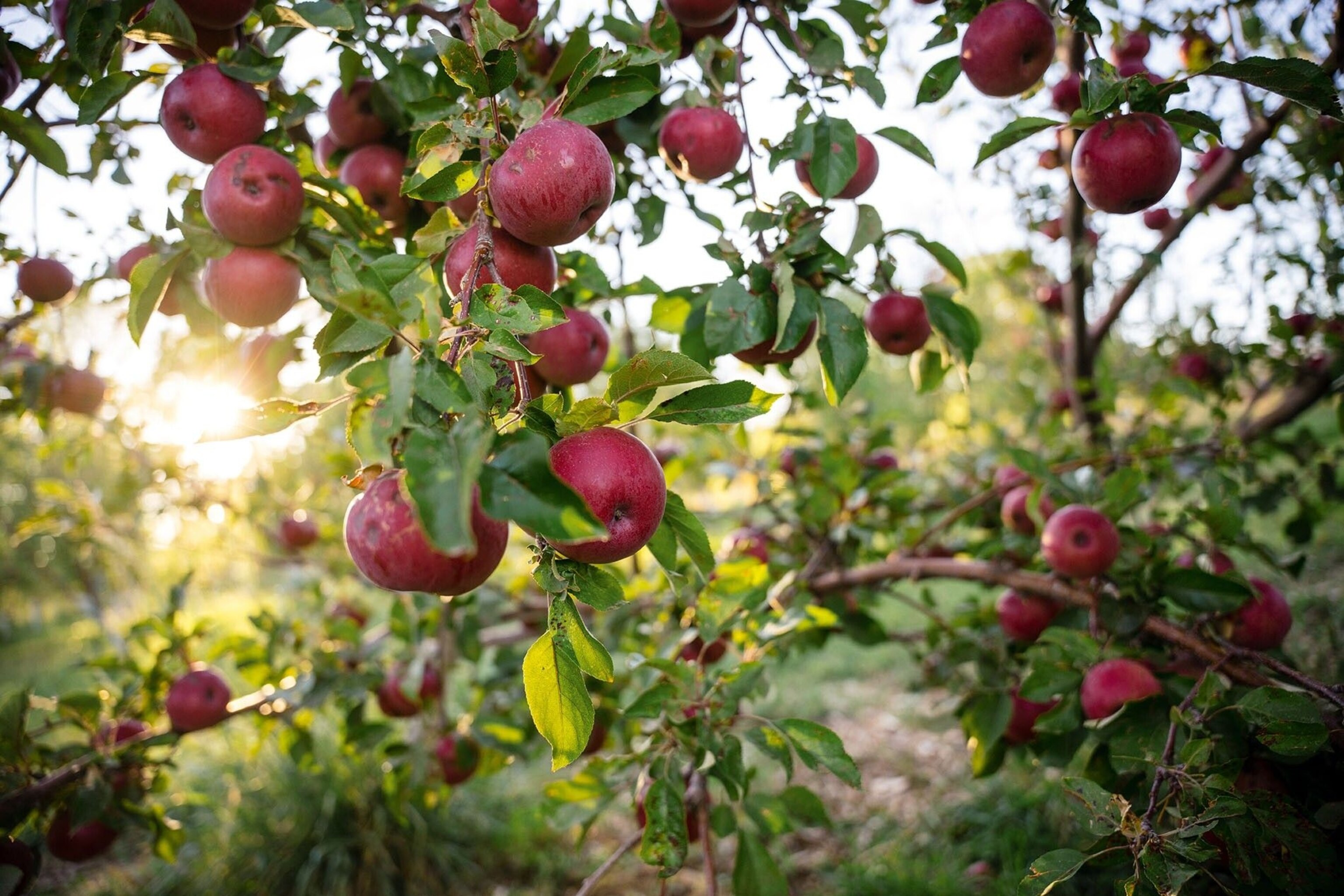
Between a rock and a hard place
I had planned a roughly circular route, which would begin here in Torrey, on the outskirts of Capitol Reef, and then head south to Grand Staircase-Escalante and the soaring monoliths of Bryce Canyon, before cutting back east. But I wasn’t in a hurry. Utah Scenic Byway 12, which connects these three national parks and monuments, is without a doubt one of the most jaw-droppingly beautiful roads in America. However, it’s also one of the most exposed.
Gleaming in the rear-view mirror behind me, the silver bullet and I cruise an hour south, rising some 9,600ft through groves of aspen that are still shouldered in spring snow, to a narrow ridge known as the Hogsback; there’s no other road like it in America. Balanced almost impossibly on a knife-edge ridge, with a drop of thousands of feet on either side and no safety barrier, it feels more like flying than driving. I traverse the razor in equal parts awe and terror, nothing but the vertiginous lightness of sheer air all around. If the Airstream looks like a starship, I think to myself, this is as about as close as it’ll ever get to taking off. I’ve abseiled with less exposure.
But it’s worth the white-knuckle ride. On the other side of the Hogsback is Grand Staircase-Escalante, a Delaware-sized stretch of sedimentary rock that steps gradually upwards for a 100 miles, preserving millions of years of Earth’s natural history in its upturned stone.
This was the last piece of the map in the Lower 48 to be filled in and it still feels like it. I hike among petrified sand dunes, not a soul around, find ancient ruins of the Anasazi, the Ancestral Pueblo People who inhabited the area for thousands of years, and then follow another old Mormon wagon road, still rattly and dirty, for 27 bumpy miles to one of Utah’s most unusual geological formations: slot canyons.
These dramatic tunnels of stone are caused by storm water cascading into
cracks in the easily erodible sandstone plateaus, and it’s thought Utah has the largest cluster of them anywhere in the world. By definition, a slot is any canyon that’s deeper than it is wide. Some, like those named Peek-a-Boo and Spooky Gulch, take that to the extreme.
I hike down to a narrow hole in a seemingly impassable wall of rock, scramble about 12ft or so up a vertical slab of slippery, smoothed-out stone and enter the slot. It’s like nowhere I’ve ever been before. Rock walls race up on either side of me to a thin slit of sky far above; waves of red and orange streaks swirl the rock like a tie-dye painting. It feels like I’m walking through an abstract sculpture garden.
But it’s also a kind of contortionist masterclass that seems closer to an abandoned amusement park ride than a pleasant stroll. I climb over boulders and slick rock arches, through narrowing slits thin enough to scrape my hands on either side. At one point, after descending a 10ft rope to a 50ft-deep vertical canyon, the path narrows to 10 inches across. I can’t even straighten my head. After two hours, I’m spat out into daylight, knees bloodied, elbows scratched, covered in dust and sweat, but I can’t get the smile off my face. If this is claustrophobia, then box me up.

But not before a night of luxury, because here’s the truth. Sitting beside your Airstream, sipping beers and roasting marshmallows, is the epitome of camping cool. Inside is another matter. Yes, it’s funky — cylindrical metal walls curve above you like the inside of a piece of retro art. But, like all campervans, things break, the shower isn’t great and you have to empty your own waste.
Yonder Escalante is the answer. This new glamping site, just past the town of Escalante, is like the love child of camping and a trendy vintage boutique hotel: bathrooms straight out of a luxury spa, a pool, cosy cabins, a communal lodge with vintage record player and cocktail hour.
“It’s camping for people that don’t love to camp!” manager Hayley jokes, passing me a gourmet barbecue feast — proper steaks, roast potatoes, carrots bathed in butter and garlic, all served in a chuck-it-on-the-firepit-yourself kit. Later, wiping the remnants of the best camping meal of my life from my chin, I have to admit that I’d happily forgo the Bear Grylls school of camping any day for this Gordon Ramsay-esque experience.
Especially if there’s a drive-in movie for pudding. Yonder Escalante was built on the grounds of an old outdoor cinema. They restored it, parked a dozen classic cars in front of it — 1950s Pontiacs and Cadillacs, a shiny red Corvette — built a snack kiosk in an Airstream and now show classic films to guests most nights of the week. A vintage American experience, in the middle of an iconic American trip.
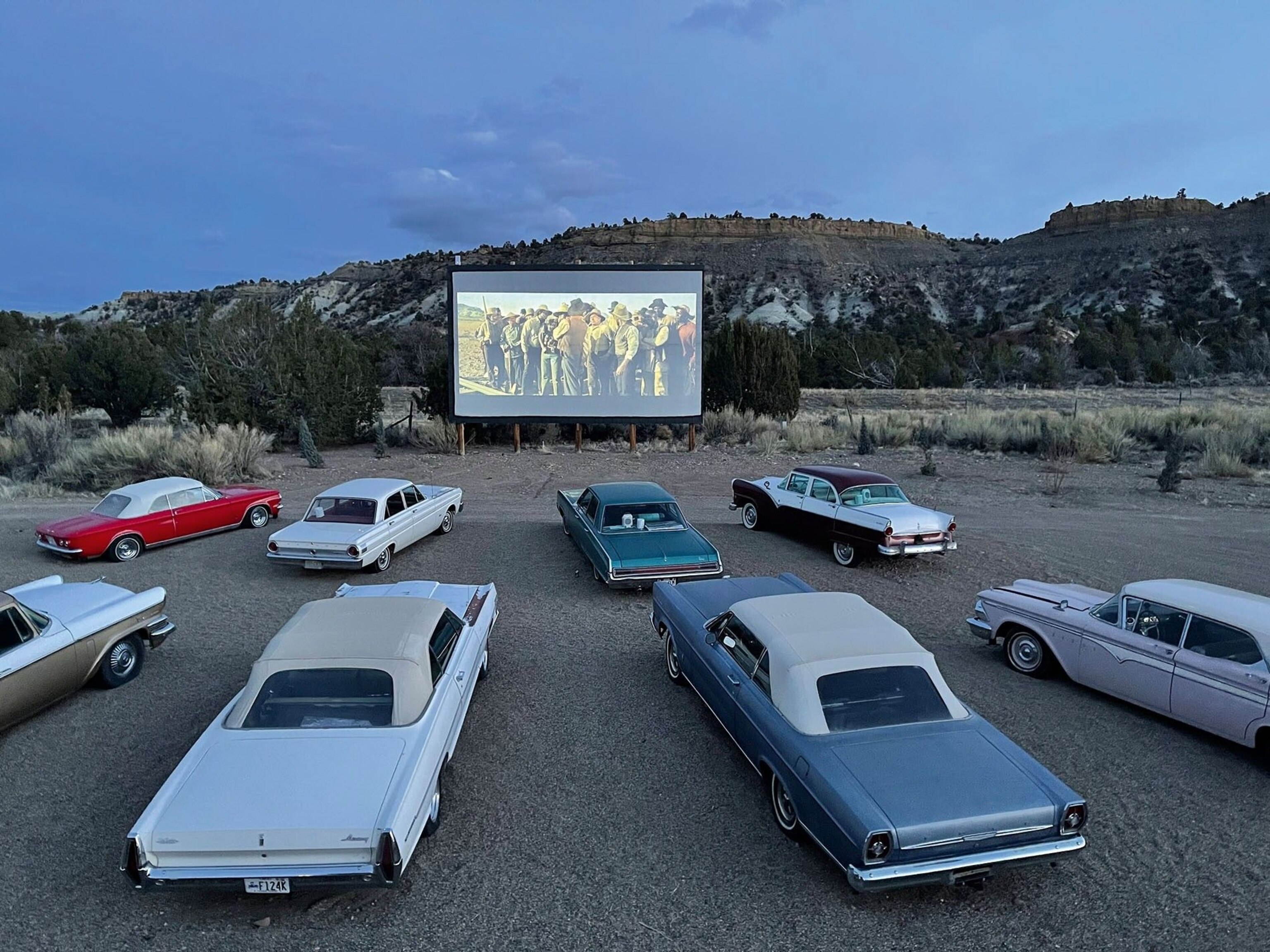
Star-spangled sky
The campsite’s location is perfect, too, right in the heart of the Grand Staircase-Escalante National Monument, but also just a short drive from the spectacular ‘hoodoos’ (a local term for statue-like rock columns) of Bryce Canyon National Park, which has more of them than anywhere on Earth.
“My Grandpa always said,” our horse-trekking cowboy guide Christian informs me as I arrive, “You need to experience two things in life: getting bucked off a horse and being punched in the face.”
Thankfully, neither comes to pass. What I do get, after a short half-hour ride to the rim, is the best view in the park. The landscape somehow makes more sense rolling under the trot of hooves. “Native American legends say these hoodoos were giants,” Christian tells me. “They got turned to stone because they took more than they needed from the land.” In this surreal place, where stones rise from the ground like enormous stalagmites and bright orange pinnacles cut the cliff walls like shark’s teeth, it feels like that might just be true.
And if it is, the Bristlecone pines would have seen it. Tucked away at the end of the 20-mile scenic drive, vast views opening on every bend, these seemingly humble trees are in fact the oldest living organism on the planet.
I hike a mile through the forest to Yovimpa Point, a pinnacle overlooking the southern end of the canyon, sentinels of red, orange and white rocks fading into the distance. Then I see them. Bristlecone pines, the most ancient of which are close to 5,000 years old, survive only in a few places in the world. Yet here they’re mere youngsters in comparison — about 1,600 years old. But it still makes you pause. Their roots predate Christopher Columbus by more than 1,000 years. They stood here as Rome fell and as Norman invaders won the Battle of Hastings. I touch their bark, gnarled and twisted by the ages, battered by millennia of wind and storm, and wonder what world they’ll be looking at 1,600 years from now when the giants of our age have turned to hoodoos and dust.
The days race past. In the Monument Valley Park, I take a tour through the backcountry. “We use yucca for shampoo,” my Navajo guide, Carol Tallis, says, showing me the land through her eyes. “Buffalo grass for brushes and sheep’s wool for yarn. Everything is used.” We hike up to Tear Drop Arch together and see the shadowed outline of distant, table-like buttes framed by an eye-shaped hole in the rock, like a dark iris. “There’s Eagle Mesa, the Sleeping Bear, the Hen,” she says, pointing out each distant rock formation in turn. In Navajo legends, these rocks were formed from the slain carcasses of defeated monsters. The closer I look, the more stories I can see hidden within.
A few hours north, I bathe in stars. Natural Bridges National Monument is the world’s first International Dark Sky Park, a designation granted to only a handful places around the world where the quality of the night sky is exceptional. Out of a list of 90 dark sky parks worldwide, 21 are in Utah — the state has the highest concentration of them anywhere on the planet.
I cook out by the fire and then hike down in the dark to the 180ft-long Owachomo Bridge, a natural stone arch spanning a deep valley, my eyes slowly adjusting to the moonlight, stones bathed in blue and silence. I lie down at the base of the bridge and look up. Light pollution is a problem all over the world; many of us who live in cities have never seen the true magnitude of the stars. As the Milky Way unfurls above me, a river of stardust spreading across the sky, I think to myself — that’s why places like this exist, to remind us there’s more to nights than Netflix. It’s hard to believe it’s real.
Perhaps, that’s the point. On my last night, in Canyonlands National Park, I hike away from the crowds at the Green River Overlook, scrambling on rocks above the cliff until there’s no one else around. Shafts of sunlight beat through a stray rain cloud like search lights, dazzling the snaking ravines in sudden bursts of colour below. Some views, I realise in that moment, are too vast to comprehend. Like watching stars, or standing on a mountain top, they’re a feeling, an emotion, rather than something you see with your eyes. They make you feel small, but at the same time part of something bigger than you’d ever imagined before.
The road is shimmering still, but it’s stretching out behind me now. The Airstream, my leading lady, is there too. Did she play her part perfectly? Of course not. Things broke, things went wrong. But that’s all part of the adventure. It’s a small price to pay for driving the most beautiful roads in America in its most iconic camping piece of kit. Kerouac, the ultimate chronicler of the great American road trip, sums up this ethos best: ‘There was nowhere to go but everywhere,’ he wrote in 1957, ‘so just keep rolling under the stars.’ And there are certainly plenty of them here.

Essentials
Getting there & around
Delta Air Lines flies from Heathrow to Salt Lake City via several different US hubs. Direct flights from Heathrow to Las Vegas with airlines including British Airways and Virgin Atlantic also offer convenient access to southern Utah.
Average flight time: 13h30m.
Airstream trailer and truck rental available via Utah Caravans of Salt Lake City.
When to go
Temperatures in July and August can reach close to 40C. Campsites also book up quickly and popular national parks will be crowded. Spring and autumn are pleasant and warm, especially in May, June and September. But April and October, although often pleasantly mild, can bring cold temperatures and even snow.
Where to stay
Wonderland RV Park, Torrey.
Fruita Campground, Capitol Reef National Park.
More info
visitutah.com
How to do it
America As You Like It offers a Utah Airstream fly-drive including return flights from Heathrow to Salt Lake City and a 14-night rental of a truck and 16ft Bambi Airstream from £1,770 per person based on four people travelling together.
Published in the Jul/Aug 2021 issue of National Geographic Traveller (UK)
Follow us on social media
Twitter | Facebook | Instagram
